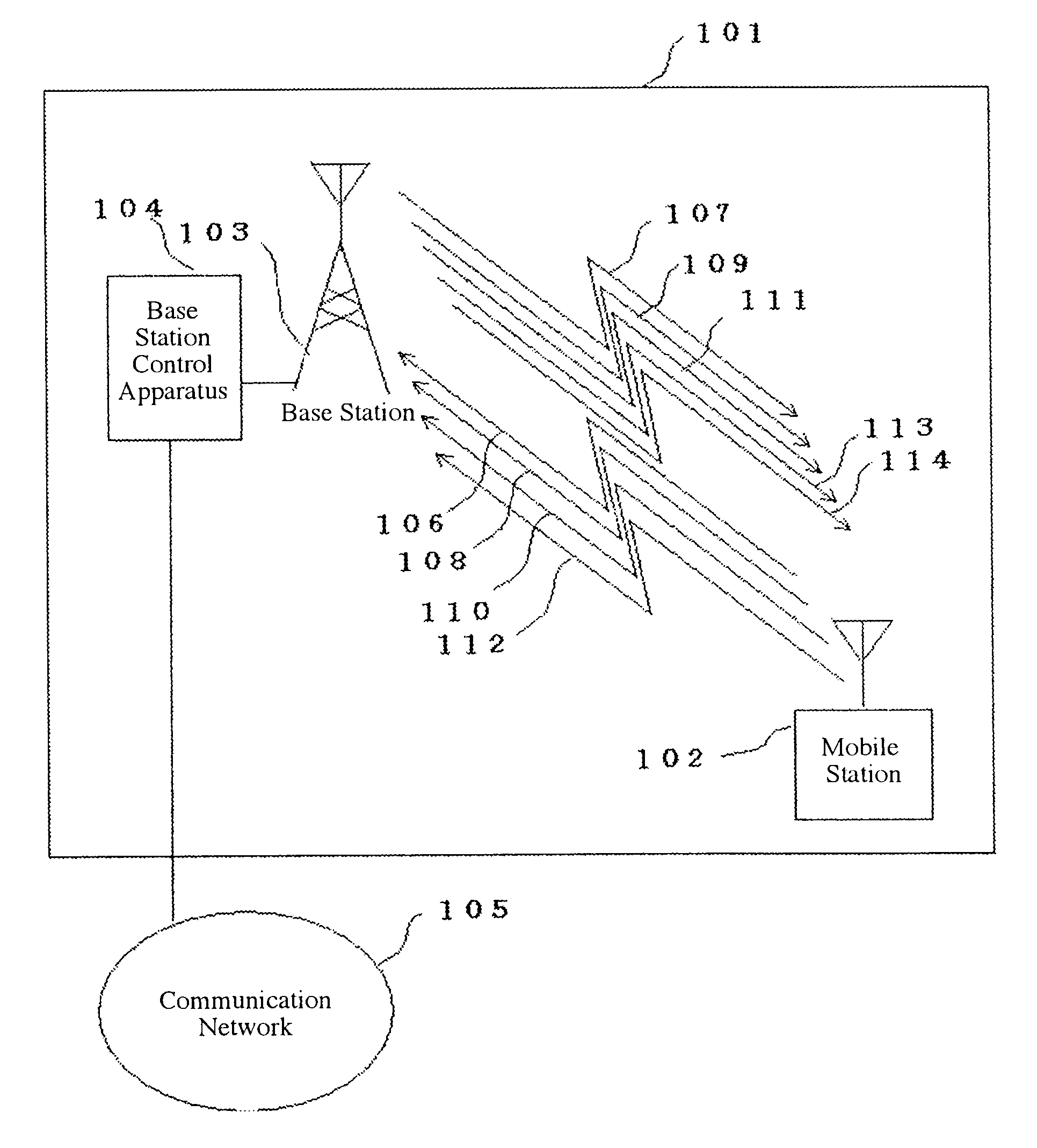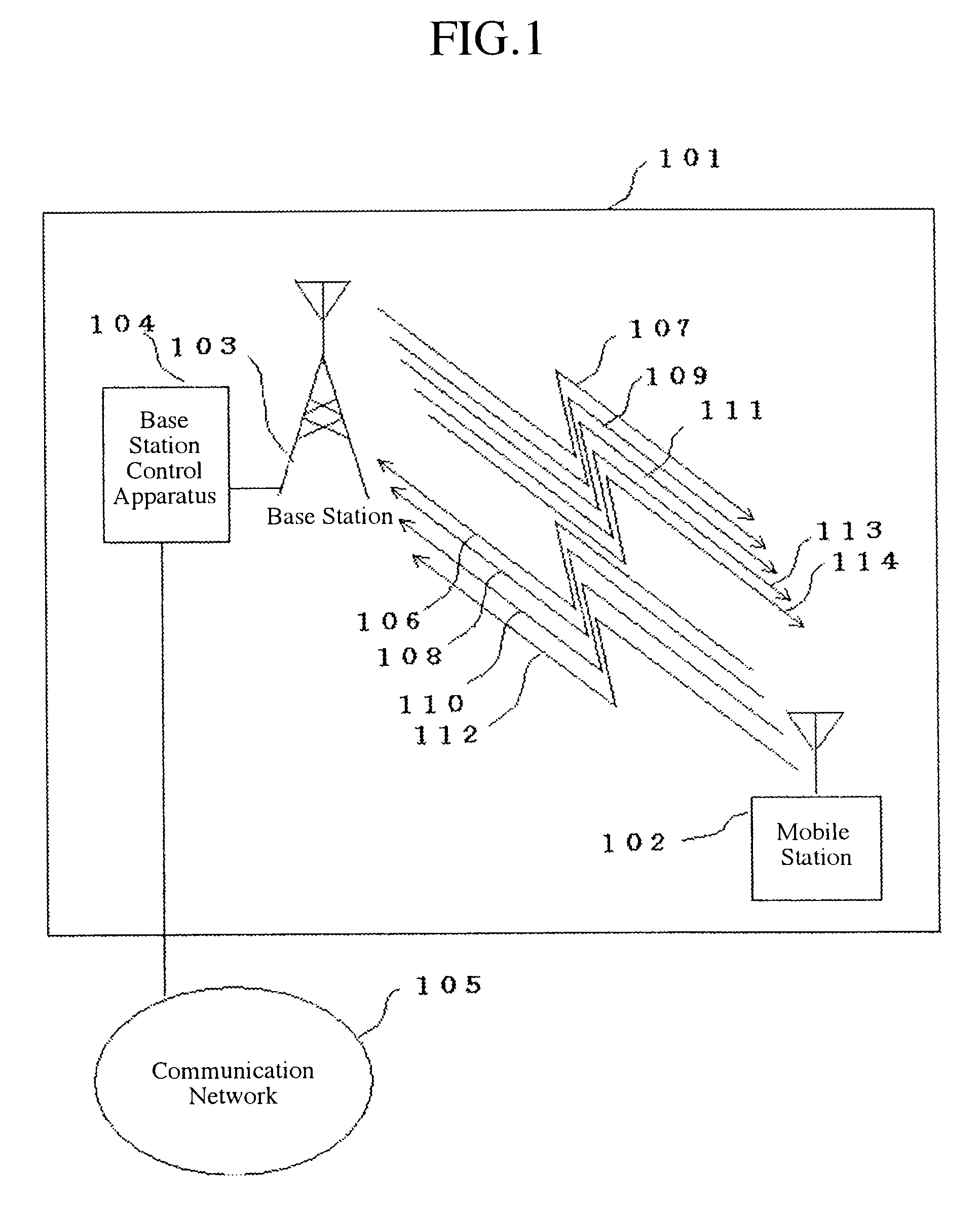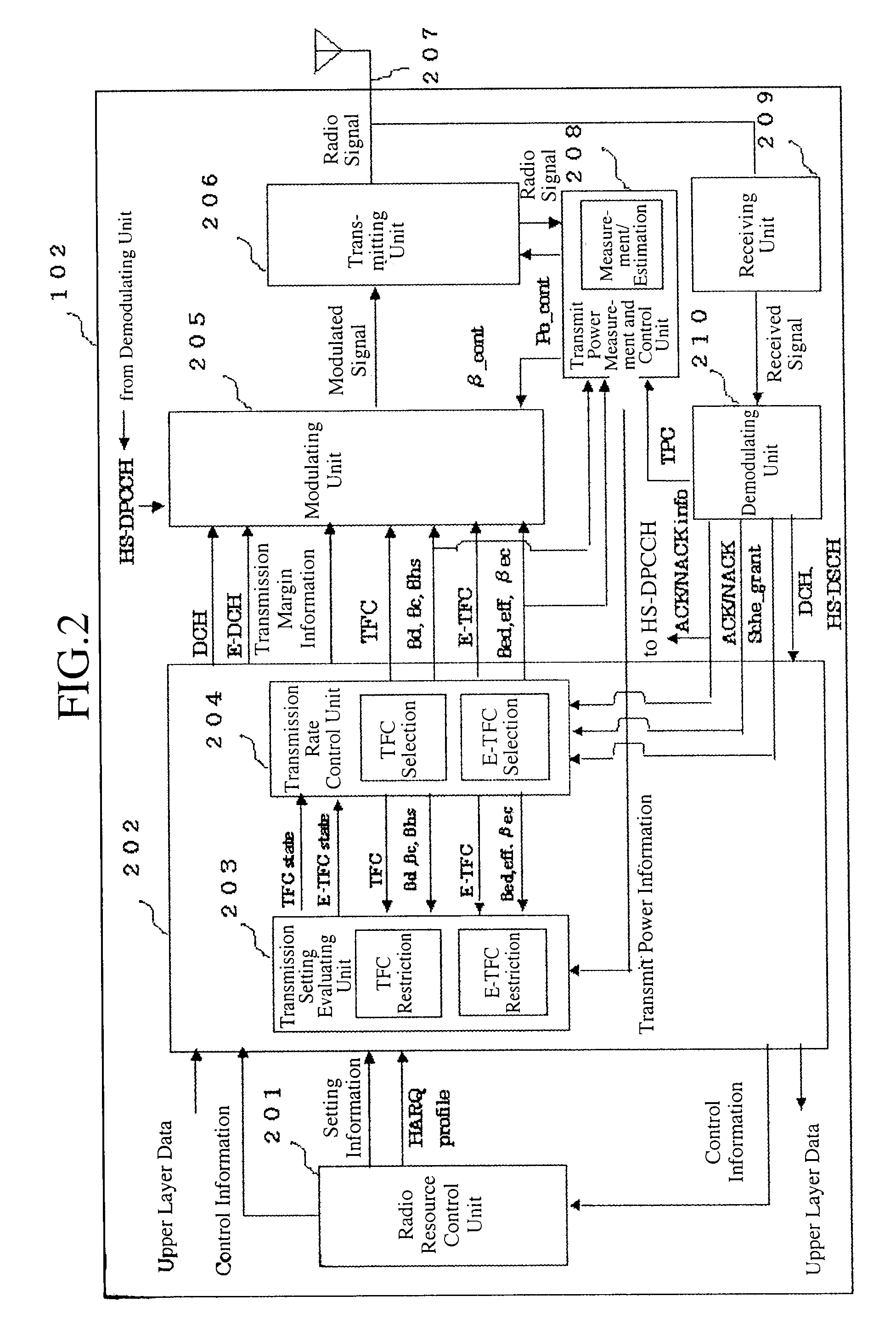Mobile station and communications method
a mobile station and communication method technology, applied in the field of mobile stations and communications methods, to achieve the effect of increasing the efficiency of the operation of the communications system and increasing the efficiency of the communications system
- Summary
- Abstract
- Description
- Claims
- Application Information
AI Technical Summary
Benefits of technology
Problems solved by technology
Method used
Image
Examples
embodiment 1
[0058]An invention in accordance with Embodiment 1 will be explained with reference to drawings. First of all, the structure of each unit of a communications system is shown with reference to FIGS. 1 to 3. Next, a flow of transmission control of a mobile station will be shown with reference to FIGS. 4 to 12.
[0059]FIG. 1 is an explanatory drawing explaining the radio communications system in accordance with the present invention. In FIG. 1, the radio communications system 101 is comprised of a mobile station 102, a base station 103, and a base station control apparatus 104. The base station 103 covers a specific communications area (generally called a sector or cell), and carries out communications with a plurality of mobile stations 102. In FIG. 1, only one mobile station 102 is shown for the sake of simplicity. Communications are carried out between the mobile station 102 and the base station 103 using one or a plurality of radio links (or channels). The base station control appara...
embodiment 2
[0119]The Pmax (βd, βc, βhs, βed(,eff), βec) specified value in accordance with Embodiment 2 of the present invention will be explained with reference to FIG. 17. In FIG. 17, according to ON / OFF of transmission of each of channels including the DPCCH, the HS-DPCCH, the DPDCH, the E-DPCCH, and the E-DPDCH, and a minimum diffusion coefficient (SF min) and a maximum number (Ncodes) of parallel E-DPDCH transmissions which are category specifications (Category) of the E-DCH as the mobile station's capability, Pmax (βd, βc, βhs, βed(,eff), βec) is equivalently defined by defining a maximum amount of reduction (MPR: Maximum Power Reduction) from the specification of the mobile station's capability (Pmax (Capability)). More specifically, Pmax (βd, βc, βhs, βed, (eff), βec) includes, as a parameter, the mobile station's capability other than the channel transmission conditions that change every TTI. By thus using and defining the category specification (Category) of the E-DCH as a parameter,...
embodiment 3
[0120]FIG. 18 is a flow chart explaining a E-TFC restriction process of evaluating the states of E-TFCs and restricting available E-TFCs. FIG. 18 is shown for explaining in detail step 803 (the E-TFC restriction process) of FIG. 8 explained in Embodiment 1, and includes some steps which are the same as those of the flow chart shown in FIG. 10. Therefore, in FIG. 18, because the same steps as those shown in FIG. 10 mean the same processes or like processes, the explanation of the steps will be omitted hereafter. In this embodiment, in the transmit power control step (e.g., step 407 of FIG. 4 shown in Embodiment 1), when only the channel amplitude (βed) of the E-DPDCH is scaled (scaling), it is reflected in the E-TFC restriction (step 803h1).
[0121]As mentioned above, in accordance with this embodiment, because the details of the transmission control in a case in which a channel for E-DCH is added are defined, there is provided an advantage of being able to make the transmission contro...
PUM
 Login to View More
Login to View More Abstract
Description
Claims
Application Information
 Login to View More
Login to View More - Generate Ideas
- Intellectual Property
- Life Sciences
- Materials
- Tech Scout
- Unparalleled Data Quality
- Higher Quality Content
- 60% Fewer Hallucinations
Browse by: Latest US Patents, China's latest patents, Technical Efficacy Thesaurus, Application Domain, Technology Topic, Popular Technical Reports.
© 2025 PatSnap. All rights reserved.Legal|Privacy policy|Modern Slavery Act Transparency Statement|Sitemap|About US| Contact US: help@patsnap.com



